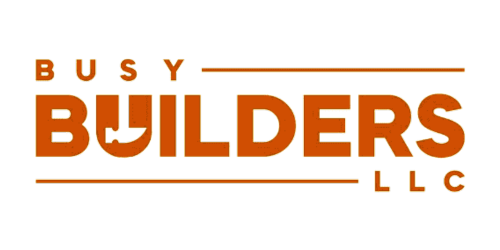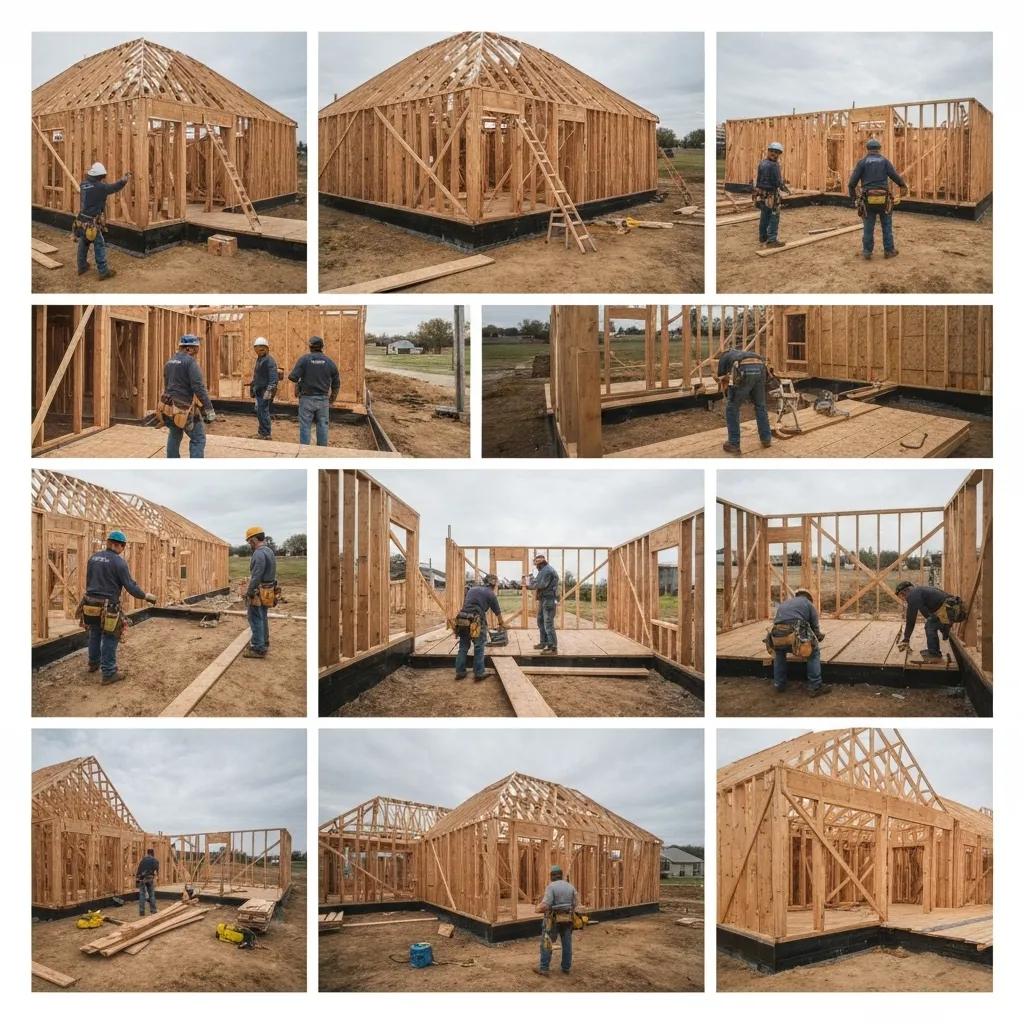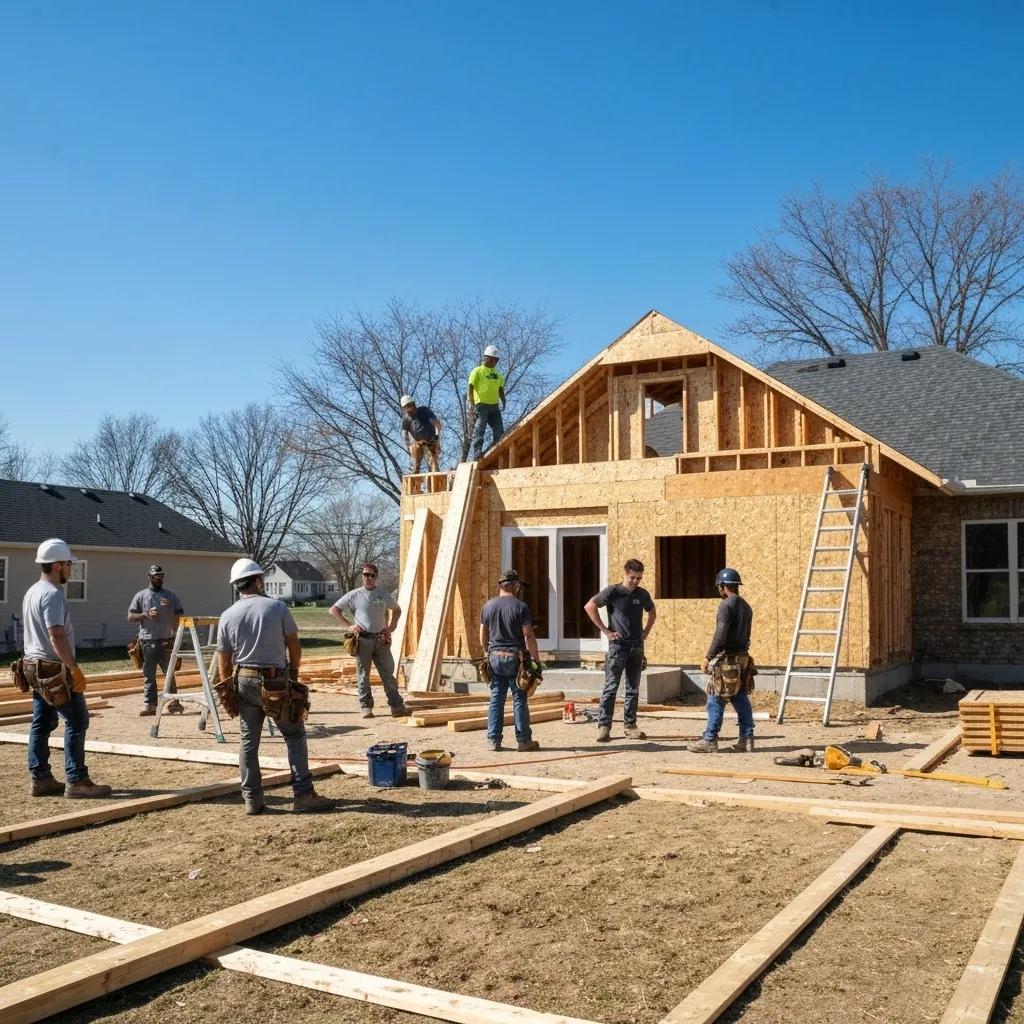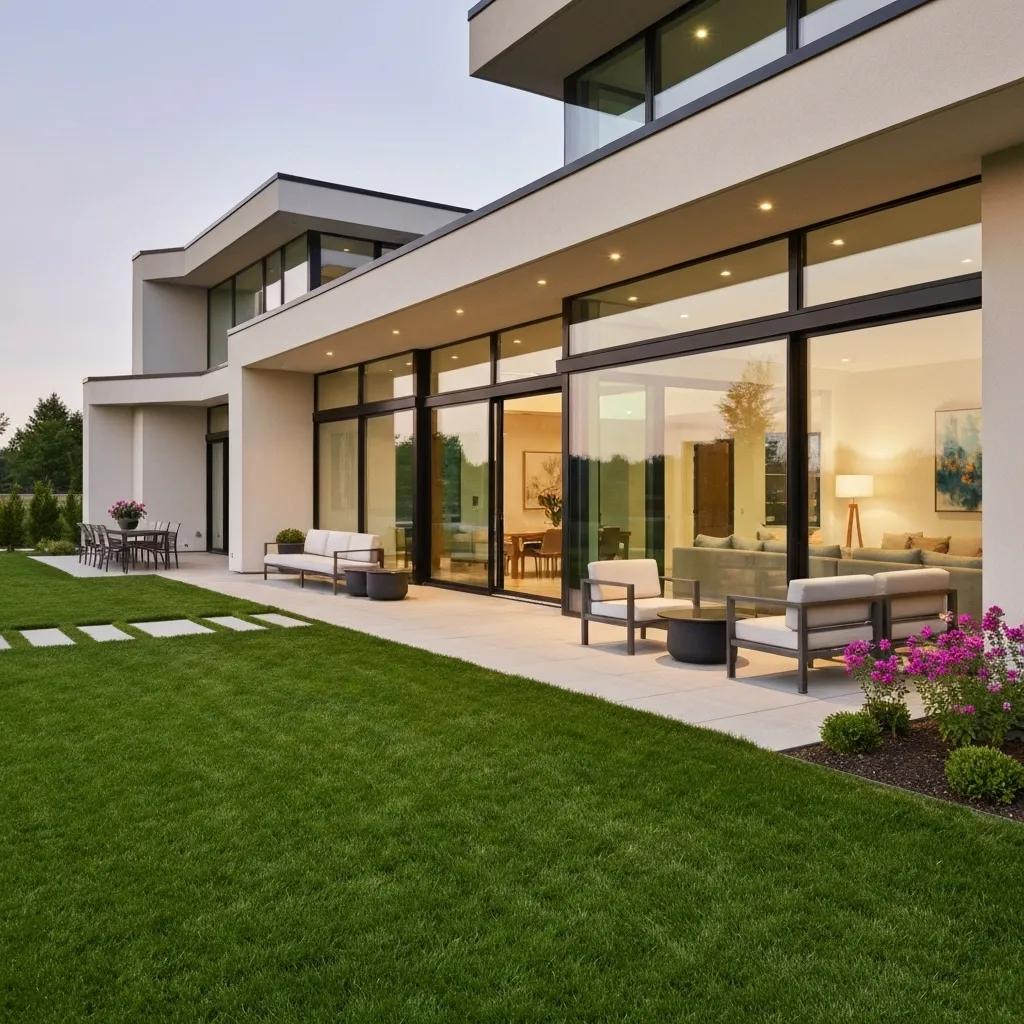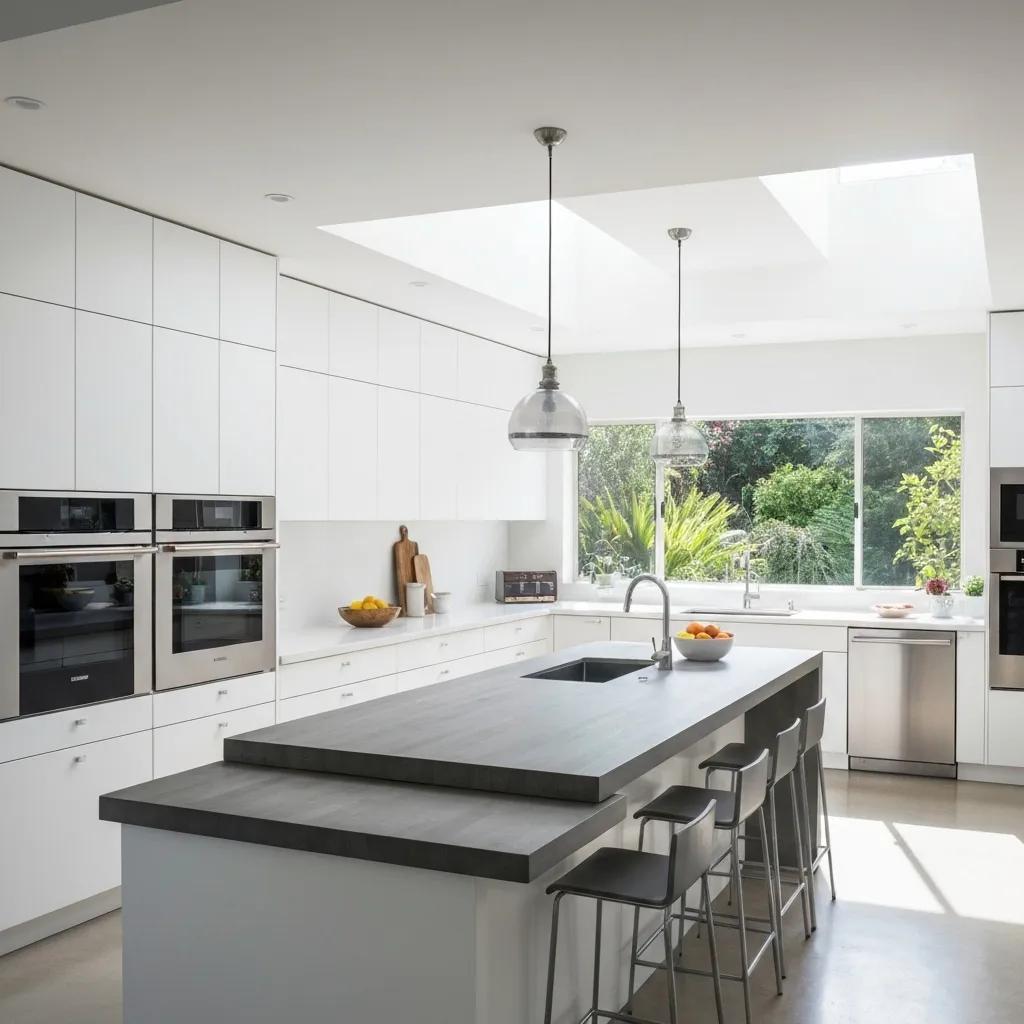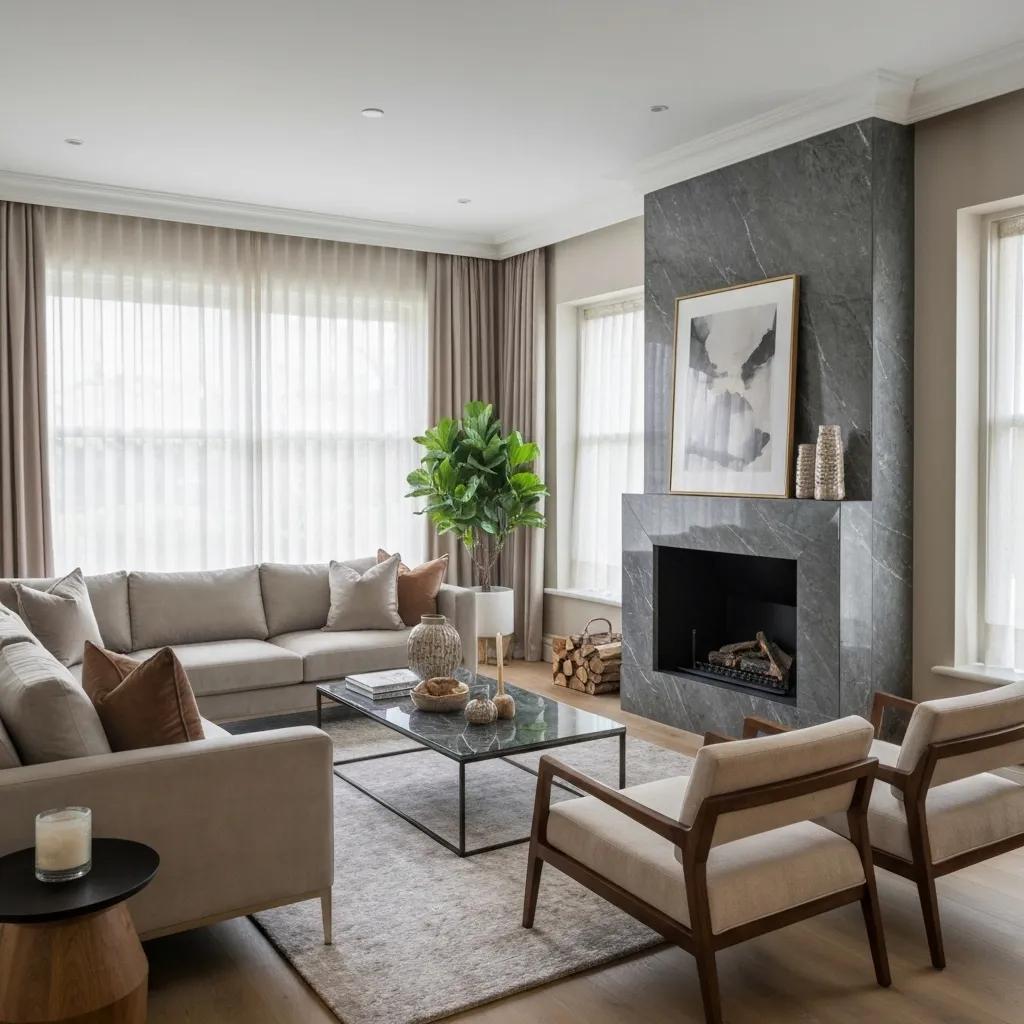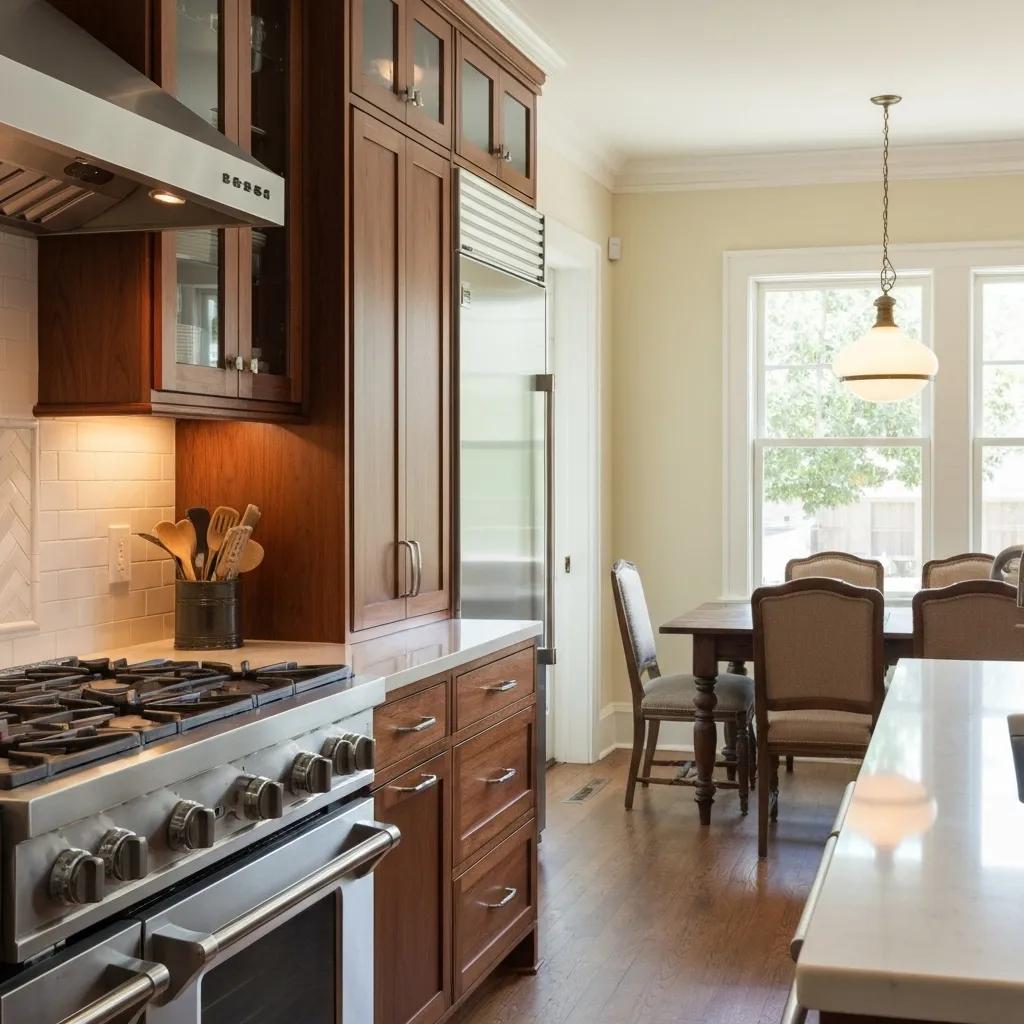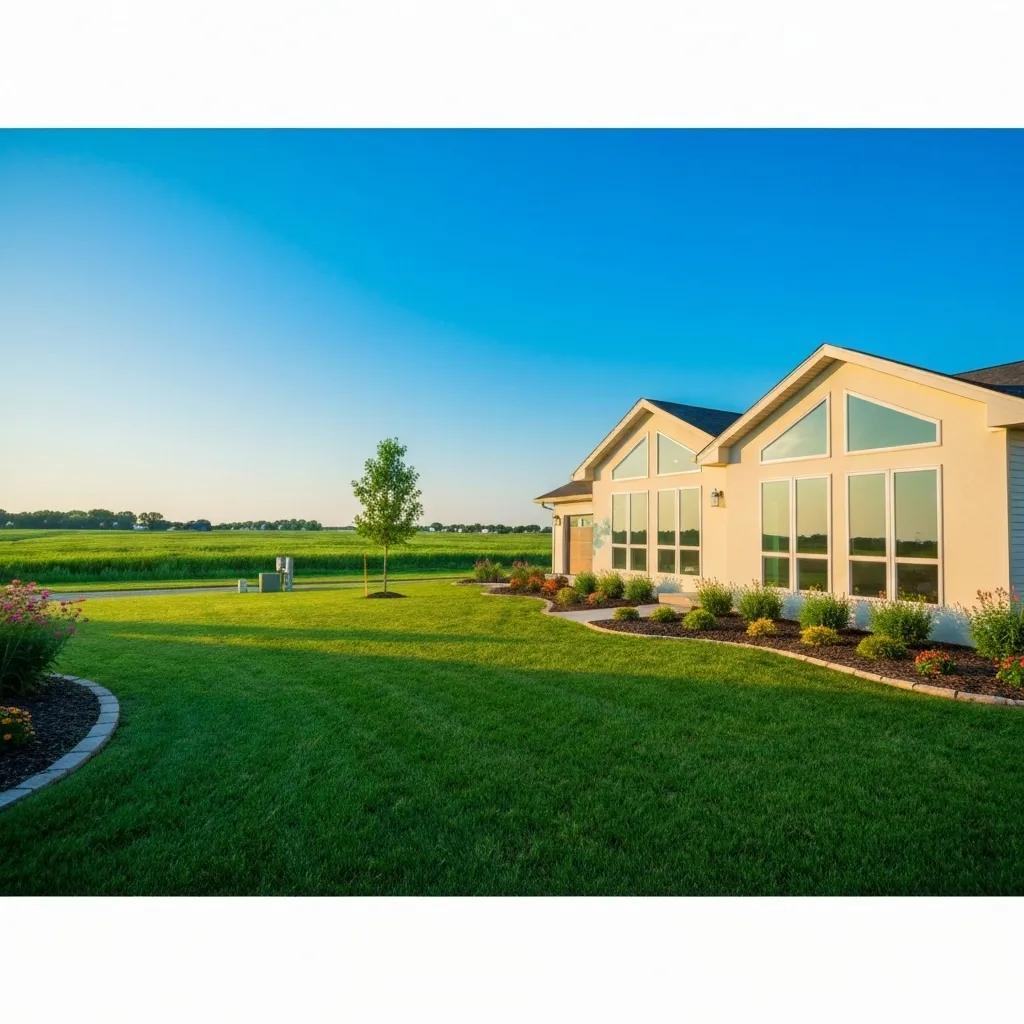
Mastering the Home Building Process in Iowa: Your Complete Guide to Planning, Permits, Costs, and Construction
Building a new home in Iowa involves a clear sequence of steps—from land acquisition through final inspections—and expert guidance ensures each phase runs smoothly. In this guide, you’ll discover how to navigate land selection, financing, permitting, site work, foundation, framing, exterior and interior finishes, and move-in procedures. You’ll learn how soil conditions dictate foundation choices, how to secure Iowa building permits, and what cost factors drive your budget. Whether you’re planning a custom barndominium or a traditional residence, Busy Builders’ New Home Construction Service will support you from initial design through the final walkthrough.
What Are the Essential Steps in the Home Building Process in Iowa?
Every Iowa home build follows a structured path that balances design intent, regulatory compliance, and construction best practices. This process ensures legal approval, on-budget performance, and lasting quality.
- Planning & Land Acquisition – Evaluate zoning, utilities, and site constraints before purchase.
- Financing & Design – Secure construction loans, finalize blueprints, and select materials.
- Permits & Approvals – Apply for state and local building permits to meet Iowa codes.
- Site Work & Foundation – Prepare the lot, address drainage, and install the foundation.
- Framing & Exterior – Erect structural framing, roof systems, and weather-resistant cladding.
- Interior Systems & Finishes – Rough-in HVAC, plumbing, electrical, then finish walls and floors.
- Final Inspections & Move-In – Complete walkthroughs, secure occupancy permits, and handle landscaping.
These seven phases establish a roadmap for your Iowa custom home. Next, we’ll see how each element shapes your timeline and budget.
How Does Land Acquisition Impact Your Iowa Home Build?
Land acquisition determines site preparation complexity and regulatory requirements. Soil composition, access to utilities, and zoning ordinances influence foundation type, excavation needs, and permit scope. For example, building on loamy soil requires different drainage solutions than clay-rich plots, which can affect both timeline and cost. Assessing these factors upfront streamlines site work and foundation selection.
What Financing Options Are Available for New Home Construction in Iowa?

Construction loans, USDA rural development loans, and conventional mortgages each serve different borrower profiles. Construction loans disburse funds in stages—land purchase, foundation, framing, and final completion—matching cash flow to project milestones. USDA loans offer favorable terms in eligible rural counties, while conventional mortgages roll construction and mortgage financing into one closing. Comparing rate structures and draw schedules helps you choose the optimal financing strategy.
How Do Iowa Residential Building Permits Affect Your Project Timeline?
Securing Iowa building permits typically requires submitting site plans, architectural drawings, and energy-code compliance documentation. The average processing time ranges from two to six weeks, depending on local jurisdiction. Delays in permit approval can push site mobilization and ordering of long-lead materials. Early engagement with city or county inspectors and Busy Builders’ permit-assistance service minimizes processing times and keeps construction on schedule.
What Should You Know About Choosing a Home Builder in Iowa?
Selecting a contractor impacts build quality, communication clarity, and budget control. Look for a licensed general contractor with:
- Proven local experience in Iowa climate conditions and codes
- Transparent communication protocols and progress reporting
- Portfolio of completed projects—such as custom homes and barndominiums
- Structured contracts that outline scopes, schedules, and payment terms
Busy Builders LLC offers end-to-end new home construction, combining local expertise with quality craftsmanship to guide you through every phase.
How Does the New Home Construction Timeline Typically Progress in Iowa?
Iowa home construction averages 9–12 months from groundbreaking to occupancy, influenced by weather windows, material lead times, and permit cycles. Late-spring starts allow for uninterrupted site work through fall. Winter months are often reserved for interior finishes and system installations. A detailed project schedule aligned with seasonal constraints maximizes efficiency and avoids weather-related delays.
How Do You Navigate Iowa Residential Building Permits and Regulations?
Understanding Iowa’s code framework and permit authorities ensures compliance and avoids costly rework. The permit process in Iowa involves multiple agencies with distinct requirements.
What Are the Key Iowa Building Codes and Permit Requirements?
Iowa enforces the International Residential Code (IRC), supplemented by state amendments for energy efficiency, accessibility, and structural design. Key requirements include: energy efficiency
- Energy Efficiency Standards – Minimum insulation R-values for walls, roofs, and floors.
- Structural Design Loads – Snow, wind, and seismic loads tailored to Iowa’s climate.
- Accessibility – Basic ADA features for public-facing home offices or accessory dwellings.
Meeting these codes protects structural integrity and ensures occupant comfort.
What Is the Step-by-Step Iowa Building Permit Application Process?
To apply for a residential building permit in Iowa:
- Submit a detailed site plan showing lot lines, setbacks, and utility connections.
- Provide complete architectural drawings with framing, structural and energy-code details.
- Include mechanical, electrical, and plumbing schematics.
- Pay permit fees based on project valuation.
- Schedule plan review and address any inspector comments.
This structured approach expedites approval and avoids compliance issues.
Which Authorities Issue Building Permits in Iowa?
Permit authority varies by location:
- County Conservation Offices handle rural zoning and septic permits.
- City Building Departments process urban residential construction permits.
- State Fire Marshal reviews specific fire-safety designs for larger homes or mixed-use structures.
Knowing which entity governs your property accelerates the application flow.
What Are the Typical Costs and Processing Times for Iowa Permits?
| Permit Type | Typical Fee Range | Processing Time |
|---|---|---|
| Building Permit | $500–$2,500 | 2–6 weeks |
| Electrical/Plumbing | $150–$500 | 1–3 weeks |
| Septic System Approval | $300–$1,000 | 3–8 weeks |
| Driveway & Grading | $200–$800 | 1–4 weeks |
These figures help you anticipate upfront expenses and schedule milestones for inspections and approvals.
What Common Questions Do Homeowners Have About Iowa Building Permits?
Owners often ask how to combine permit sets, what inspections are mandatory, and whether one permit covers multiple trades. Clear guidance on scope, permit duration, and reinspection policies prevents surprises and keeps projects moving forward.
What Are the Typical Costs to Build a House in Iowa?
Building costs in Iowa reflect land, materials, labor, and local market conditions. Understanding cost drivers lets you tailor specifications to your budget.
How Do Land, Materials, and Labor Influence Iowa Home Building Costs?
Land prices near urban centers can exceed $50,000 per acre, while rural sites remain under $20,000. Material costs—lumber, concrete, steel—fluctuate with national supply chains. Labor rates vary by trade: concrete work averages $8–$12 per square foot, framing $10–$15, and finish carpentry $12–$20. Combining local labor with reliable suppliers ensures cost predictability.
What Are Average Construction Costs Per Square Foot in Iowa?
| Region | Basic Build ($/ft²) | Custom Build ($/ft²) |
|---|---|---|
| Des Moines Metro | $111 | $166.50 |
| Cedar Rapids Area | $113 | $169.50 |
| Davenport Area | $119 | $178.50 |
| Ames Area | $119 | $178.50 |
| Dubuque Area | $100 | $150.00 |
| Ottumwa Area | $109 | $163.50 |
| Mason City Area | $109 | $163.50 |
| Ankeny Area | $110 | $165.00 |
These benchmarks guide budget planning and material selections, from standard vinyl siding to premium brick veneer.
How Can Financing Affect Your Overall Home Building Budget?
Interest rates on construction loans and the draw schedule impact carrying costs. A one-close construction mortgage rolls closing costs into one package, reducing origination fees and simplifying cash flow. Early rate locks for materials can hedge against price volatility in lumber and steel components.
What Are Cost Considerations for Building a Barndominium in Iowa?
Barndominiums use steel-frame shells and metal roofing, which reduce framing labor but may require higher insulation investment. On average, barndominium costs range from $120–$160 per square foot. Custom architectural touches and interior finishes can raise costs closer to traditional custom homes, but the combined living–workspace design often yields long-term value.
How Can You Plan a Budget for Sustainable and Smart Home Features in Iowa?
Incorporating geothermal HVAC, solar panels, and high-performance windows adds 5–10% to initial costs but delivers energy savings over time. Smart thermostats, integrated security, and home automation typically cost $5–$15 per square foot installed. Factoring incentives—such as federal tax credits—improves ROI for sustainable upgrades.
What Are the Key Site Work and Foundation Considerations for Iowa Homes?
A solid foundation begins with proper site preparation and soil assessment to ensure structural stability and moisture control under Iowa’s freeze-thaw conditions.
What Site Preparation Steps Are Required for Iowa Residential Construction?
Site preparation includes clearing vegetation, grading for drainage, and installing erosion-control measures. Soil testing evaluates bearing capacity and identifies high-clay zones that need engineered fill or drainage trenches. Precise site preparation reduces settlement risks and moisture infiltration under slab or basement foundations.
How Does Iowa Soil Influence Foundation Type Selection?
Iowa soils range from silty loam to heavy clay. Clay soils expand and contract with moisture, requiring deeper footings or continuous frost walls. Sandy loams offer better drainage but may need engineered pads to prevent shifting. Matching soil profiles to foundation designs prevents cracks and structural issues.
What Foundation Types Are Best Suited for Iowa Homes?
| Foundation Type | Characteristic | Benefit |
|---|---|---|
| Full Basement | Excavation below frost depth | Additional living/storage space |
| Slab-on-Grade | Concrete slab insulated at edges | Lower cost, simplified drainage |
| Crawl Space | Elevated floor above soil | Easy system access and repairs |
How Does Busy Builders Ensure Quality Foundation Installation in Iowa?
Busy Builders employs certified concrete crews, on-site soil verification, and moisture-barrier installations tailored to local soil conditions. Our process includes proactive communication with structural engineers and inspectors to validate compliance and performance.
How Is Framing and Exterior Construction Tailored to Iowa's Climate?
Structural framing and exterior assemblies guard against wind, snow, and moisture while establishing the home’s architectural character.
What Are the Common Framing Techniques Used in Iowa Home Building?
Traditional platform framing uses 2×6 exterior walls for increased insulation depth and load-bearing capacity, while advanced framing techniques reduce lumber usage by aligning wall studs with roof trusses and headers. Engineered floor joists minimize deflection and expedite installation of subfloors and mechanical runs.
Which Roofing Options Best Withstand Iowa Weather Conditions?
Asphalt shingles remain popular for cost-effectiveness and wind resistance. Metal roofing provides superior longevity, fire resistance, and snow-shedding capability. Synthetic underlayment and ice-dam protection membranes complement both systems to prevent leaks during freeze-thaw cycles.
What Exterior Finishes Are Popular for Iowa Homes?
Vinyl siding offers low maintenance and a broad color palette. Brick veneer delivers classic curb appeal and thermal mass. Engineered stone or fiber-cement panels combine durability with design flexibility. Coordinating material textures and colors enhances resale value and neighborhood harmony.
How Do Energy-Efficient Windows and Doors Improve Iowa Homes?
High-performance windows with Low-E coatings and argon fills minimize heat loss in winter and solar gain in summer. Properly sealed exterior doors with insulated cores prevent drafts and improve overall energy performance. These features reduce HVAC load and contribute to utility savings over the life of the home.
What Interior Systems and Finishes Are Essential for Iowa New Homes?
Interior systems and finishes shape comfort, functionality, and aesthetic appeal. Coordinated installation of core systems reduces conflicts and rework.
How Are HVAC, Plumbing, and Electrical Systems Installed in Iowa Homes?
HVAC ductwork and equipment are sized per Manual J calculations to match Iowa climate loads. Plumbing rough-ins precede slab pours or framing completion, with code-compliant venting and pipe insulation. Electrical wiring follows the NEC standards, accommodating lighting layouts, outlets, and future smart-home integrations.
What Insulation Types and Drywall Options Suit Iowa's Climate?
Spray-foam insulation in rim joists and knee walls prevents air infiltration. Blown-in cellulose or fiberglass batts achieve recommended R-values in attics and walls. Mold-resistant drywall in moisture-prone areas protects interior finishes and promotes healthy indoor air quality.
What Interior Design Trends Are Popular in Iowa New Home Construction?
Open layouts with transitional styles blend modern cabinetry, quartz countertops, and mixed-material flooring. Matte-black fixtures and natural wood accents highlight functional elegance. Accent walls in reclaimed wood or tile behind stoves and vanities create visual focal points.
How Can Smart Home Technology Be Integrated into Iowa Homes?
Smart thermostats learn occupant patterns to optimize comfort and energy use. Automated lighting systems adjust brightness and color for mood settings. Integrated security systems with remote monitoring and wireless sensors enhance safety. Planning low-voltage wiring during framing avoids retrofit costs.
How Do Final Inspections, Landscaping, and Move-In Processes Work in Iowa?
The final stages confirm building code compliance and prepare your property for occupancy and enjoyment.
What Are the Final Inspection and Walkthrough Requirements in Iowa?
Inspectors verify structural, electrical, plumbing, and mechanical work against approved plans. A comprehensive punch list documents minor corrections. Once all items pass final inspection, you receive an occupancy permit enabling legal move-in.
How Should Landscaping and Exterior Finishing Be Planned for Iowa Homes?
Grading ensures positive drainage away from the foundation. Driveway and sidewalk installations use freeze-thaw-resistant aggregates and joint sealants. Native plantings and drought-tolerant species reduce maintenance and support local ecosystems.
What Home Warranty and Maintenance Should Iowa Homeowners Expect?
New home warranties typically cover structural elements for 10 years, major systems for 2 years, and workmanship for 1 year. Routine maintenance—gutter cleaning, HVAC filter changes, and sealant inspections—preserves home performance and warranty validity.
How Does Busy Builders Support Clients Through the Move-In Process?
Busy Builders coordinates final cleaning, key handoffs, and orientation sessions, providing homeowner manuals and maintenance checklists. Our team remains available for service calls and warranty support to ensure your long-term satisfaction.
What Are the Unique Steps to Building a Barndominium in Iowa?
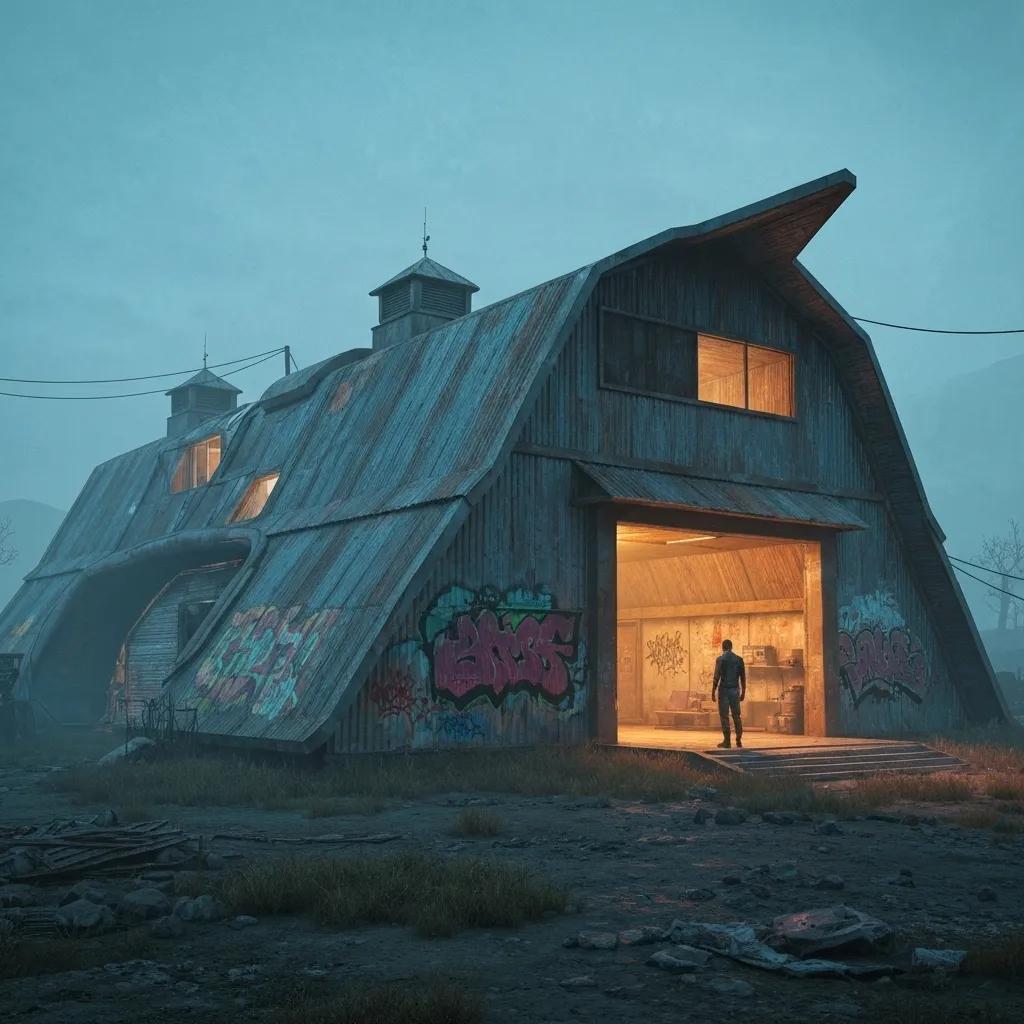
Barndominiums combine steel-frame durability with open-plan living, requiring specialized planning and regulatory compliance unique to Iowa’s rural zoning.
How Do You Plan and Design a Barndominium for Iowa Zoning and Climate?
Start with rural zoning research to confirm allowable accessory dwellings and mixed-use structures. Design floor plans that optimize open-bay spaces for living quarters, workshops, and storage. Incorporate thermal breaks in steel framing and high-R insulation to meet energy codes under Iowa’s variable temperatures.
What Are the Construction Steps Specific to Iowa Barndominiums?
- Erect steel structural shell with weather-resistant coatings.
- Install rigid insulation board and vapor barriers on exterior walls.
- Frame interior partition walls for bedrooms, bathrooms, and utility spaces.
- Complete mechanical, electrical, and plumbing rough-ins within uninsulated bays.
- Finish interior surfaces and install efficient HVAC systems suited to large open spans.
How Much Does It Cost to Build a Barndominium in Iowa?
Barndominium costs range from $120 to $160 per square foot for basic shell packages. Custom interior finishes, masonry façades, and advanced systems raise costs into the $180–$220 range per square foot, depending on material choices and scale.
What Are the Permit and Regulatory Requirements for Barndominiums in Iowa?
Permit requirements mirror those for residential homes but often include additional structural calculations for steel framing. Septic permits, well permits, and rural driveway approvals may apply. Early coordination with county planning and zoning offices prevents scope changes mid-construction.
How Can Busy Builders Help You Build a Custom Barndominium in Iowa?
Busy Builders leverages in-house design expertise and steel-frame specialists to deliver turnkey barndominium solutions. From zoning pre-applications to energy-code compliance, our team manages every detail, ensuring your custom barndo meets performance standards and aesthetic goals.
Building a home in Iowa—from a classic new construction to a custom barndominium—demands thorough planning, precise execution, and local expertise. By following these steps and partnering with Busy Builders LLC, you gain a trusted ally who guides you through land acquisition, financing, permitting, construction, and move-in. Connect with Busy Builders’ New Home Construction Service to transform your vision into a functional, beautiful Iowa residence.
Frequently Asked Questions
What are the benefits of building a barndominium compared to a traditional home in Iowa?
Barndominiums offer unique advantages, such as lower construction costs and faster build times due to their steel-frame structure. They provide open floor plans that can accommodate both living and workspace, making them ideal for those who want a multifunctional home. Additionally, barndominiums often require less maintenance than traditional homes, and their energy efficiency can lead to long-term savings. The aesthetic appeal of a barndominium can also enhance property value, especially in rural settings where they blend well with the landscape.
How can I ensure my home is energy-efficient during construction in Iowa?
To enhance energy efficiency, consider using high-performance insulation, energy-efficient windows, and HVAC systems designed for your climate. Incorporating renewable energy sources, such as solar panels, can further reduce energy costs. During the design phase, prioritize passive solar design principles, such as optimal window placement and thermal mass materials. Additionally, working with builders experienced in energy-efficient construction can help ensure compliance with local codes and maximize your home’s energy performance.
What should I consider when selecting materials for my Iowa home?
When choosing materials, consider durability, maintenance, and energy efficiency. Iowa’s climate can be harsh, so opt for materials that withstand extreme temperatures and moisture. For exteriors, materials like fiber-cement siding or brick can offer longevity and low maintenance. Inside, select finishes that are both aesthetically pleasing and functional, such as mold-resistant drywall in moisture-prone areas. Additionally, consider the environmental impact of your materials and look for sustainable options that align with your values.
What are the common challenges faced during the home building process in Iowa?
Common challenges include navigating local building codes and permit requirements, which can vary significantly by jurisdiction. Weather conditions can also impact construction timelines, particularly during winter months. Additionally, fluctuations in material costs and labor availability can affect your budget. To mitigate these challenges, thorough planning, early engagement with local authorities, and working with experienced builders can help streamline the process and avoid unexpected delays or expenses.
How can I prepare for the final inspection of my new home in Iowa?
To prepare for the final inspection, ensure that all construction work complies with approved plans and local building codes. Conduct a thorough walkthrough to identify any outstanding issues or incomplete tasks. Create a punch list of items that need attention, such as touch-ups or repairs. Ensure that all systems—electrical, plumbing, and HVAC—are fully operational and that required documentation, such as warranties and manuals, is organized and accessible for the inspector.
What landscaping considerations should I keep in mind for my new home in Iowa?
When landscaping, prioritize native plants that require less water and maintenance, which can thrive in Iowa’s climate. Ensure proper grading to direct water away from the foundation, preventing moisture issues. Consider incorporating hardscaping elements, such as patios or walkways, that are durable and freeze-thaw resistant. Additionally, plan for seasonal changes by selecting plants that provide year-round interest and support local wildlife, enhancing both the beauty and ecological value of your property.
What are the advantages of working with a local builder like Busy Builders in Iowa?
Working with a local builder like Busy Builders offers several advantages, including in-depth knowledge of Iowa’s building codes, climate considerations, and regional market trends. Local builders often have established relationships with suppliers and subcontractors, which can lead to better pricing and scheduling. Their familiarity with the area allows for tailored designs that fit the local aesthetic and community standards. Additionally, local builders are more accessible for communication and support throughout the construction process, ensuring a smoother experience.
